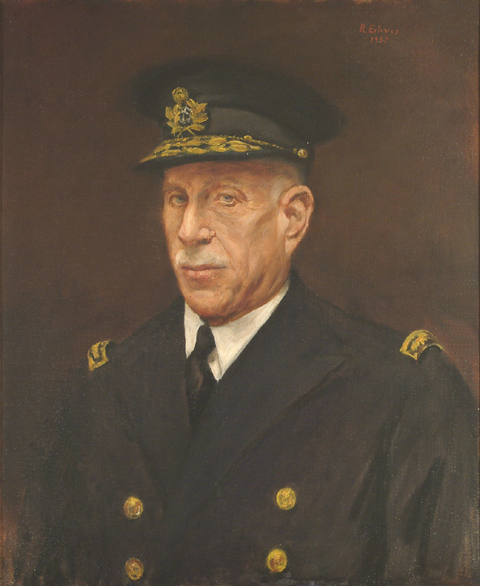<Back to Index>
- Astronomer John Flamsteed, 1646
- Painter Josef Danhauser, 1805
- President of Portugal José Mendes Cabeçadas, 1883
PAGE SPONSOR

José Mendes Cabeçadas Júnior, OTE, ComA, commonly known as Mendes Cabeçadas (Loulé, August 19, 1883 - Lisbon, June 11, 1965), was a Portuguese Marine officer, free mason and republican, having a major role in the preparation of the revolutionary movements that created and ended the Portuguese First Republic: the 5 October revolution in 1910 and the 28 May coup d'état of 1926. In the aftermath he became the 69th Minister of Finance for one day only on May 30, 1926, then becoming interim Minister of Foreign Affairs for two days between May 30 and June 1, after what he again became the 70th Minister of Finance on the same day. He served as the ninth President of the Republic (the first of the Military dictatorship) and Prime Minister for a brief period of time (from May 31, 1926 to June 16, 1926).
Mendes Cabeçadas was one of those responsible for the revolt on board the ship Adamastor, during the republican revolution of 1910. However he soon became disappointed with the regime he had helped to create. In 1926 he led the revolution against the First Republic in Lisbon after Gomes da Costa had started it in Braga. Prime Minister António Maria da Silva resigned and just days after (May 31) President Bernardino Machado named him Prime Minister. On the same day the President also resigned and Mendes Cabeçadas assumed the role of President of the Republic.
As a revolutionary with moderate tendencies he thought it possible to form a government that wouldn't question the constitutional regime, but with no influence on the Democratic Party. However the other revolutionaries (among them Gomes da Costa and Óscar Carmona) judged him as incapable and in a meeting in Sacavém on June 17, 1926 Mendes Cabeçadas was forced to renounce the posts of President of the Republic and President of the Council of Ministers (Prime Minister) in favour of Gomes da Costa.
He joined the opposition to the regime for a third time, involving himself in several revolutionary attempts and subscribed to many manifestos against the dictatorship, until his death in 1965 during the period known as the Estado Novo (New State), headed by António de Oliveira Salazar.
He married in Santa Isabel, Lisbon, in March 1911 Maria das Dores Formosinho Vieira (Silves, Silves, January 6, 1880 - December 22, 1949) and had four daughters.